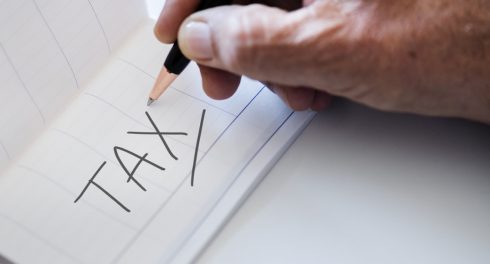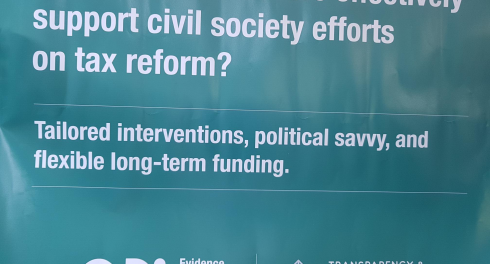This post is part of the Fiscal Futures blog series exploring some of the biggest issues that fiscal accountability enthusiasts are likely to encounter over the next 10 to 15 years. Learn more about the Fiscal Futures project and download resources here.
Public finance and government budgets are things few people get excited about, but they affect every one of us much more than we think. A government’s decisions on who pays what taxes, who gets what services, and how much debt to take on can have a huge impact on people’s income and well-being. These decisions also determine whether a society will be more equal or remain divided, and whether people — including the disadvantaged — will have real opportunities for a better life.
The previous post in this series raised important questions about the global democracy crisis. More and more people feel distrustful and disempowered, seeing a tiny elite reap most of the benefits from economic growth and globalization. Can democracy be reinvigorated, rather than give way to populist and authoritarian forces? Can the social contract — which is about representative governments working for everyone’s benefit — be reclaimed? Can a society avoid tearing itself apart by a ‘zero-sum’ worldview, where someone’s benefit must mean someone else’s loss?
I think all of this is possible. And I believe that re-imagining public finance and government budgets might just be the key to such democratic renewal. Let me tell you why and how.
 The problem is that budgets are too hard to access, read, and understand – Greek to most people. But things do not need to be that way. Imagine a world in which all citizens can have a real say on policy decisions, directly or through their elected representatives. Imagine them arguing and debating about how public money should be raised and used, aided by clear and easily understandable budget information. As there isn’t enough money to cover everything, priorities are discussed and trade-offs assessed. When decisions are made, they are based on a reasonable consensus and considered fair, the best possible to meet everyone’s needs and provide everyone with a ladder to success.
The problem is that budgets are too hard to access, read, and understand – Greek to most people. But things do not need to be that way. Imagine a world in which all citizens can have a real say on policy decisions, directly or through their elected representatives. Imagine them arguing and debating about how public money should be raised and used, aided by clear and easily understandable budget information. As there isn’t enough money to cover everything, priorities are discussed and trade-offs assessed. When decisions are made, they are based on a reasonable consensus and considered fair, the best possible to meet everyone’s needs and provide everyone with a ladder to success.
Is that too much to ask? Is this a pipe dream?
Perhaps. But many ideas that we cherish today were also considered crazy and unrealistic not so long ago. Such as that everyone should go to school, not just the nobility. Or that women should have the vote. Or that people should elect their own leaders rather than be ruled by colonial masters. Or that every worker should be able to enjoy social security.
What I have in mind is certainly quite far from today’s reality, but that does not mean it’s impossible. Across many countries, experiences with local participatory budgeting processes, with all their limitations, have been seen as contributing to democratic renewal. So far, few governments have successfully tried to replicate such experiences at the national level or extend public input beyond small infrastructure projects, but again that does not mean it cannot be done. Using the same innovative spirit, and creatively applying it to bigger and more important issues, is certainly within the realm of human possibilities and inventiveness. Technological advances are here to help, and not just in rich countries.
Making such change possible, however, requires us to change the way we think about public finance. For the past 50 years, fiscal policies and government budgets have focused narrowly on two issues: deficits and growth. The logic is simple enough to understand: governments should avoid going into debt and keep taxes low which encourages the private sector to grow the economy. Economic growth, in this narrative, “trickles down” and markets work their magic to improve everyone’s well-being.
Fiscal discipline and economic growth are of course important. But they do not necessarily lead to improvements in people’s lives on their own, and cannot be considered as the sole ends of fiscal policy. In fact, this economic model has contributed to the democratic crisis. In recent decades, the rich have benefited disproportionately, leaving too many behind, unable to find work, security, and hope for their futures. Meanwhile, income inequality has soared across and inside many countries, undermining social cohesion and a common sense of belonging. Through this crisis, governments have been viewed as distant and uncaring of most people, or captured by a few, and public policies have failed to respond to persistent poverty and climate change – challenges that threaten our very humanity.
What is therefore urgently needed is an alternative framework that makes economic sense and works for all people. Parts of such a framework already exist. International civil society networks have started outlining some of the key elements of a different narrative through campaigns on fighting inequality, promoting tax justice, and targeting public resources to the realization of economic and social rights. The International Monetary Fund recently echoed these concerns and stepped up its own work on inequality, which highlights how the issue can “erode social cohesion, lead to political polarization, and ultimately lower economic growth.” This is an encouraging sign because it suggests the International Monetary Fund — one of the purveyors of the current public finance framework — is starting to recognize that framework’s limitations.
So what would public finance that puts the public good — human beings with their needs and aspirations — at the center of government policy-making look like? What would it take for sound economics to avoid both extreme poverty and extreme riches, protect and promote people’s rights (rather than treating them as collateral), and safeguard the natural environment for present and future generations? I think it should be based on four interlinked pillars:
1. EQUITY
The first and most important goal of public finance is to promote equity and social justice by ensuring that the costs and benefits of fiscal policies are distributed fairly across the population, satisfying everyone’s specific needs and providing adequate opportunities for everyone’s flourishment as human beings and citizens. Among other things, pursuing this goal would imply the universal provision of basic services and a special attention to poor, vulnerable, and disadvantaged groups, for example through targeted programs and transfers. It would also imply a reduction of income inequality to acceptable levels, for example through progressive taxation, but also through reducing unproductive tax breaks and loopholes that benefit the rich.
2. SUSTAINABILITY
The second goal reformulates and expands on the need for governments to maintain a certain dose of fiscal discipline and avoid getting into too much debt. This goal is about maximizing the fiscal space available to governments over the long term, while taking into account broader fiscal sustainability issues like demographic trends, climate change, the depletion of natural capital, and more. Pursuing this goal would include assessing different options for mobilizing domestic resources through tax reforms, promoting a careful management of natural resources, renegotiating existing debt, and managing public-private partnerships responsibly. It would also imply moving beyond Gross Domestic Product as the key measure of an economy’s success to more comprehensive measures that take into account environmental and social — and not just fiscal — sustainability.
3. EFFECTIVENESS
The third goal addresses the need to manage existing resources in a way that maximizes their expected impact, and best transforms funding into the delivery of quality goods and services. Pursuing this goal would imply improving public financial management and other related systems — such as human resources or procurement — that allow for a more effective use of public resources. It would also imply addressing the issue of corruption, which often imposes great costs to poorer citizens in particular, and impedes the achievement of better development outcomes.
4. INCLUSION
The fourth and final goal supports and helps achieve the others by ensuring that budget processes are organized in ways that promote democratic dialogue and allow everyone, including marginalized groups, to have a voice in policy choices. Pursuing this goal would imply a major shift in how information on fiscal policies is produced, designed, and distributed so that it can be accessed and understood by anyone, in addition to creating new, innovative spaces for participation and deliberation through which citizens could engage in the budget process and hold government accountable for how it manages public finances.
My hope is that a framework like the one proposed here might give groups working on fiscal openness — and on public policy more generally — a new impetus and help us anchor our engagement with fiscal issues in the pursuit of human dignity. The democratic crisis we face provides us with an opportunity for a substantive rethink; in fact, throughout history some of the most consequential decisions have been made in such moments. But no entity can do it alone. Advancing a more just framework will require new alliances not only across civil society, but with progressive politicians and governments, economists and public finance specialists in academic and policy circles, and opinion-makers and young activists who can help shift the narrative on public finance and government budgets.
Most people do not like to talk about public finance because they see no connection with their lives. Reframing public finance to respond to people’s concerns, or putting the ‘public’ back into public finance, will not only help budgets work for everyone, it may even restore our trust in government and our hope in democracy.
Paolo de Renzio is a Senior Research Fellow at the International Budget Partnership. He extends his thanks to Warren Krafchick, Michael Jarvis, and – especially – Rakesh Rajani, for their help and guidance in writing this piece.
First published on IBP site.


